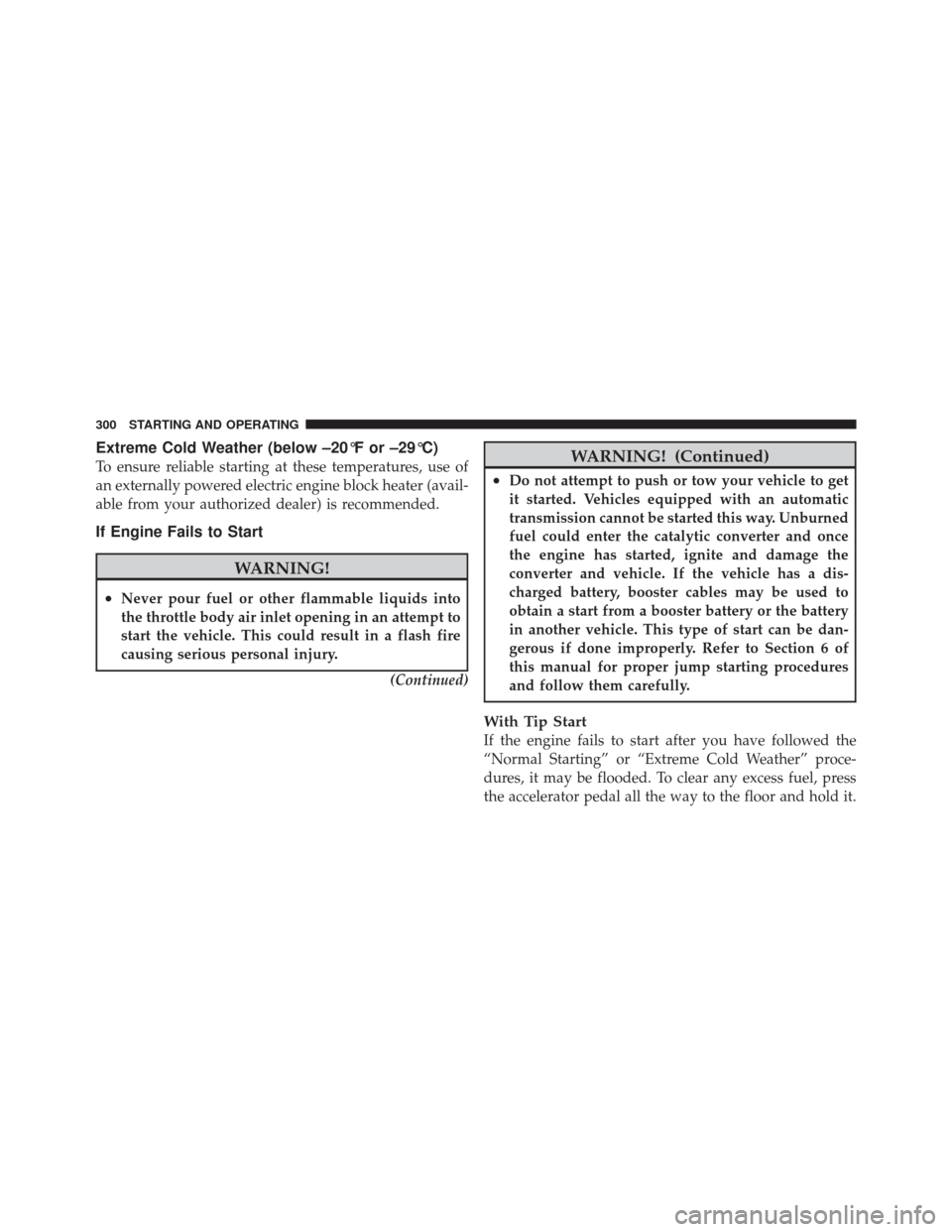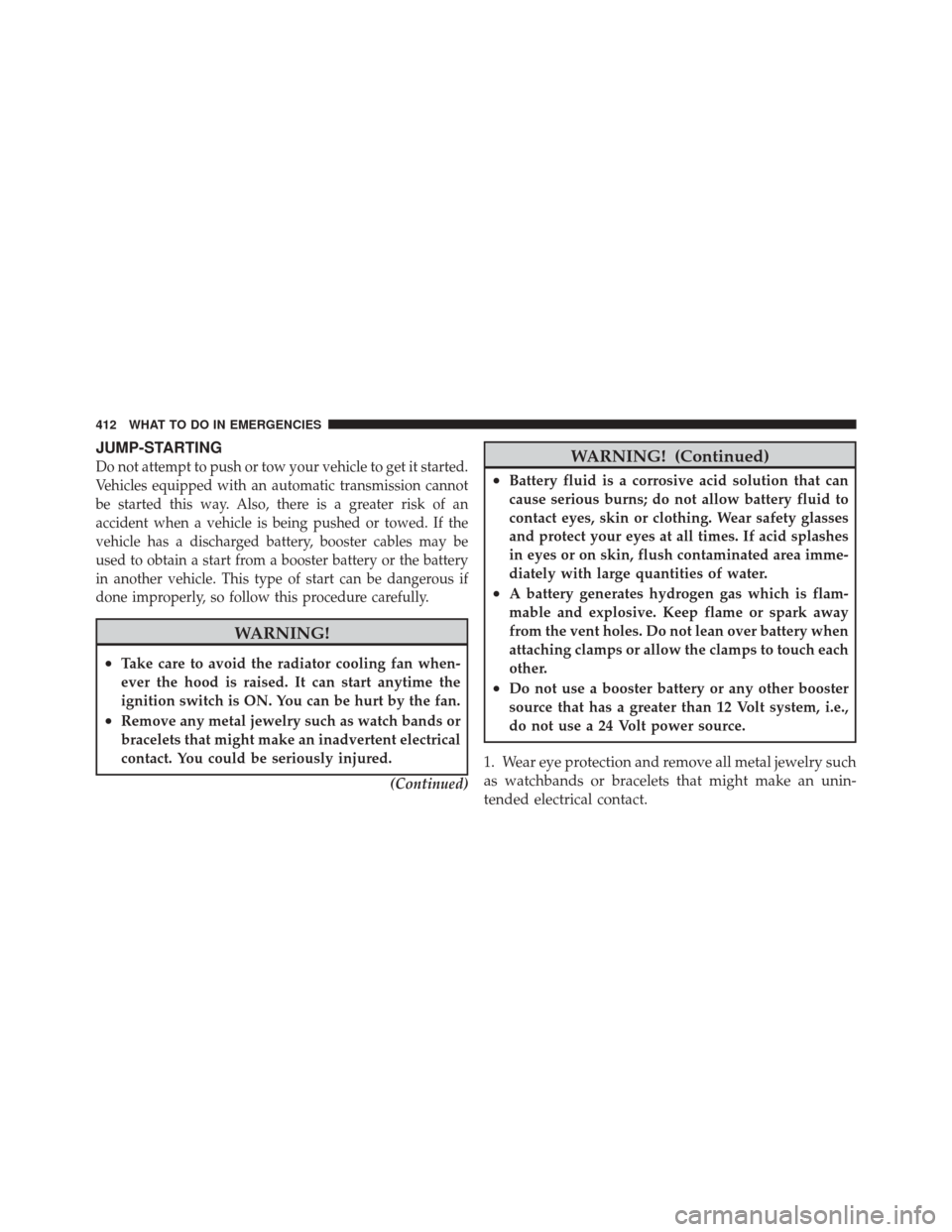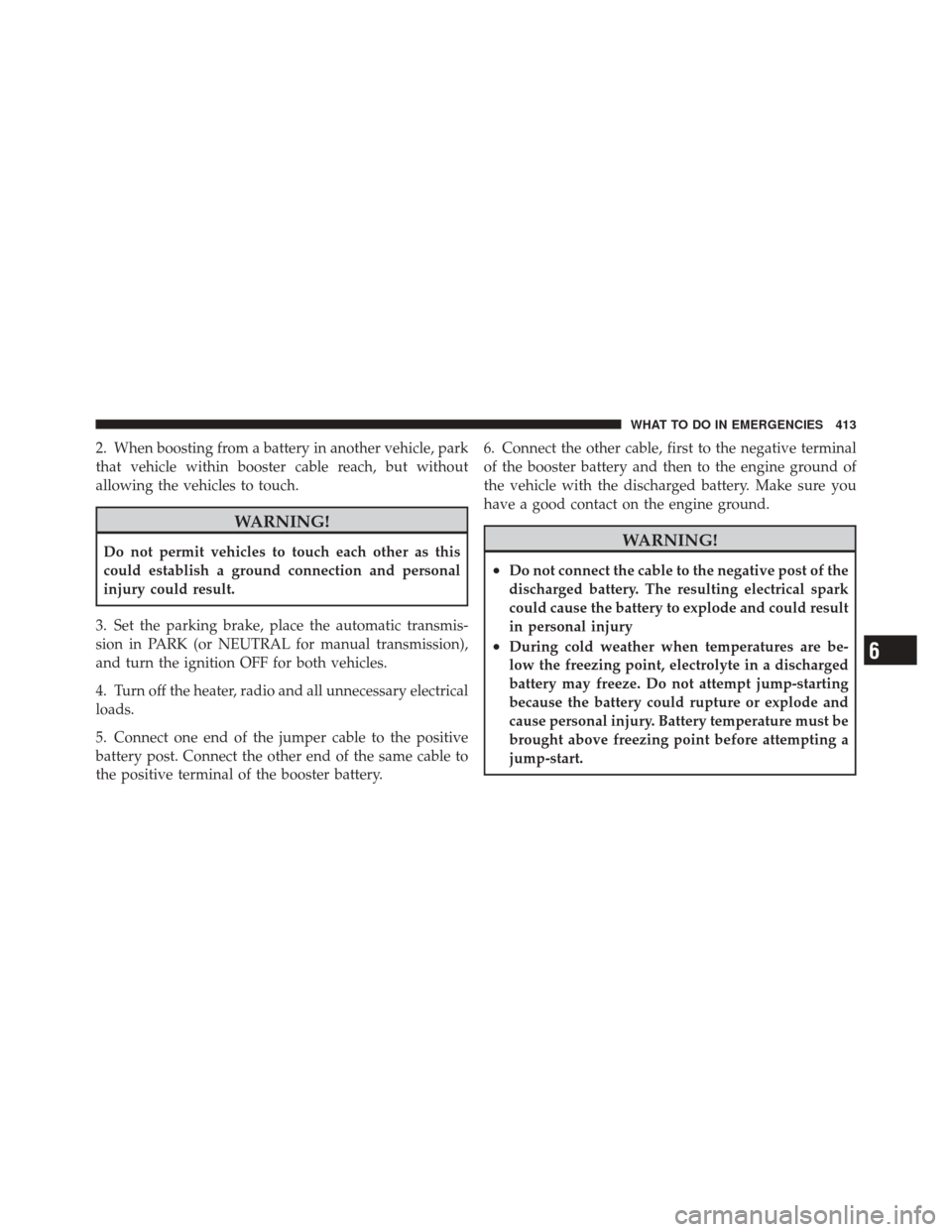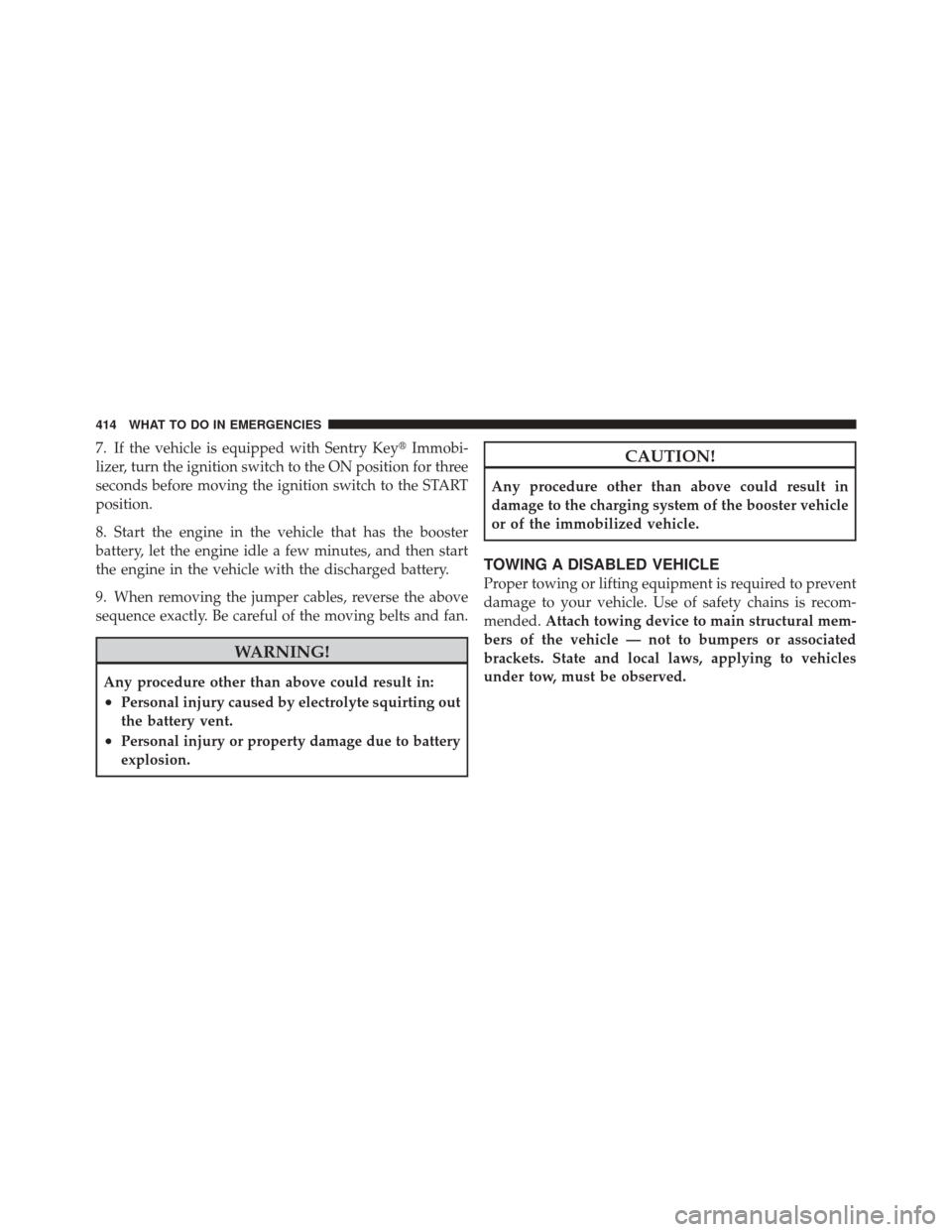Page 301 of 522

Extreme Cold Weather (below –20°F or –29°C)
To ensure reliable starting at these temperatures, use of
an externally powered electric engine block heater (avail-
able from your authorized dealer) is recommended.
If Engine Fails to Start
WARNING!
•Never pour fuel or other flammable liquids into
the throttle body air inlet opening in an attempt to
start the vehicle. This could result in a flash fire
causing serious personal injury.(Continued)
WARNING! (Continued)
•Do not attempt to push or tow your vehicle to get
it started. Vehicles equipped with an automatic
transmission cannot be started this way. Unburned
fuel could enter the catalytic converter and once
the engine has started, ignite and damage the
converter and vehicle. If the vehicle has a dis-
charged battery, booster cables may be used to
obtain a start from a booster battery or the battery
in another vehicle. This type of start can be dan-
gerous if done improperly. Refer to Section 6 of
this manual for proper jump starting procedures
and follow them carefully.
With Tip Start
If the engine fails to start after you have followed the
“Normal Starting” or “Extreme Cold Weather” proce-
dures, it may be flooded. To clear any excess fuel, press
the accelerator pedal all the way to the floor and hold it.
300 STARTING AND OPERATING
Page 413 of 522

JUMP-STARTING
Do not attempt to push or tow your vehicle to get it started.
Vehicles equipped with an automatic transmission cannot
be started this way. Also, there is a greater risk of an
accident when a vehicle is being pushed or towed. If the
vehicle has a discharged battery, booster cables may be
used to obtain a start from a booster battery or the battery
in another vehicle. This type of start can be dangerous if
done improperly, so follow this procedure carefully.
WARNING!
•Take care to avoid the radiator cooling fan when-
ever the hood is raised. It can start anytime the
ignition switch is ON. You can be hurt by the fan.
•Remove any metal jewelry such as watch bands or
bracelets that might make an inadvertent electrical
contact. You could be seriously injured.(Continued)
WARNING! (Continued)
•Battery fluid is a corrosive acid solution that can
cause serious burns; do not allow battery fluid to
contact eyes, skin or clothing. Wear safety glasses
and protect your eyes at all times. If acid splashes
in eyes or on skin, flush contaminated area imme-
diately with large quantities of water.
•A battery generates hydrogen gas which is flam-
mable and explosive. Keep flame or spark away
from the vent holes. Do not lean over battery when
attaching clamps or allow the clamps to touch each
other.
•Do not use a booster battery or any other booster
source that has a greater than 12 Volt system, i.e.,
do not use a 24 Volt power source.
1. Wear eye protection and remove all metal jewelry such
as watchbands or bracelets that might make an unin-
tended electrical contact.
412 WHAT TO DO IN EMERGENCIES
Page 414 of 522

2. When boosting from a battery in another vehicle, park
that vehicle within booster cable reach, but without
allowing the vehicles to touch.
WARNING!
Do not permit vehicles to touch each other as this
could establish a ground connection and personal
injury could result.
3. Set the parking brake, place the automatic transmis-
sion in PARK (or NEUTRAL for manual transmission),
and turn the ignition OFF for both vehicles.
4. Turn off the heater, radio and all unnecessary electrical
loads.
5. Connect one end of the jumper cable to the positive
battery post. Connect the other end of the same cable to
the positive terminal of the booster battery. 6. Connect the other cable, first to the negative terminal
of the booster battery and then to the engine ground of
the vehicle with the discharged battery. Make sure you
have a good contact on the engine ground.WARNING!
•Do not connect the cable to the negative post of the
discharged battery. The resulting electrical spark
could cause the battery to explode and could result
in personal injury
•During cold weather when temperatures are be-
low the freezing point, electrolyte in a discharged
battery may freeze. Do not attempt jump-starting
because the battery could rupture or explode and
cause personal injury. Battery temperature must be
brought above freezing point before attempting a
jump-start.6
WHAT TO DO IN EMERGENCIES 413
Page 415 of 522

7. If the vehicle is equipped with Sentry Key�Immobi-
lizer, turn the ignition switch to the ON position for three
seconds before moving the ignition switch to the START
position.
8. Start the engine in the vehicle that has the booster
battery, let the engine idle a few minutes, and then start
the engine in the vehicle with the discharged battery.
9. When removing the jumper cables, reverse the above
sequence exactly. Be careful of the moving belts and fan.
WARNING!
Any procedure other than above could result in:
•Personal injury caused by electrolyte squirting out
the battery vent.
•Personal injury or property damage due to battery
explosion.
CAUTION!
Any procedure other than above could result in
damage to the charging system of the booster vehicle
or of the immobilized vehicle.
TOWING A DISABLED VEHICLE
Proper towing or lifting equipment is required to prevent
damage to your vehicle. Use of safety chains is recom-
mended. Attach towing device to main structural mem-
bers of the vehicle — not to bumpers or associated
brackets. State and local laws, applying to vehicles
under tow, must be observed.
414 WHAT TO DO IN EMERGENCIES